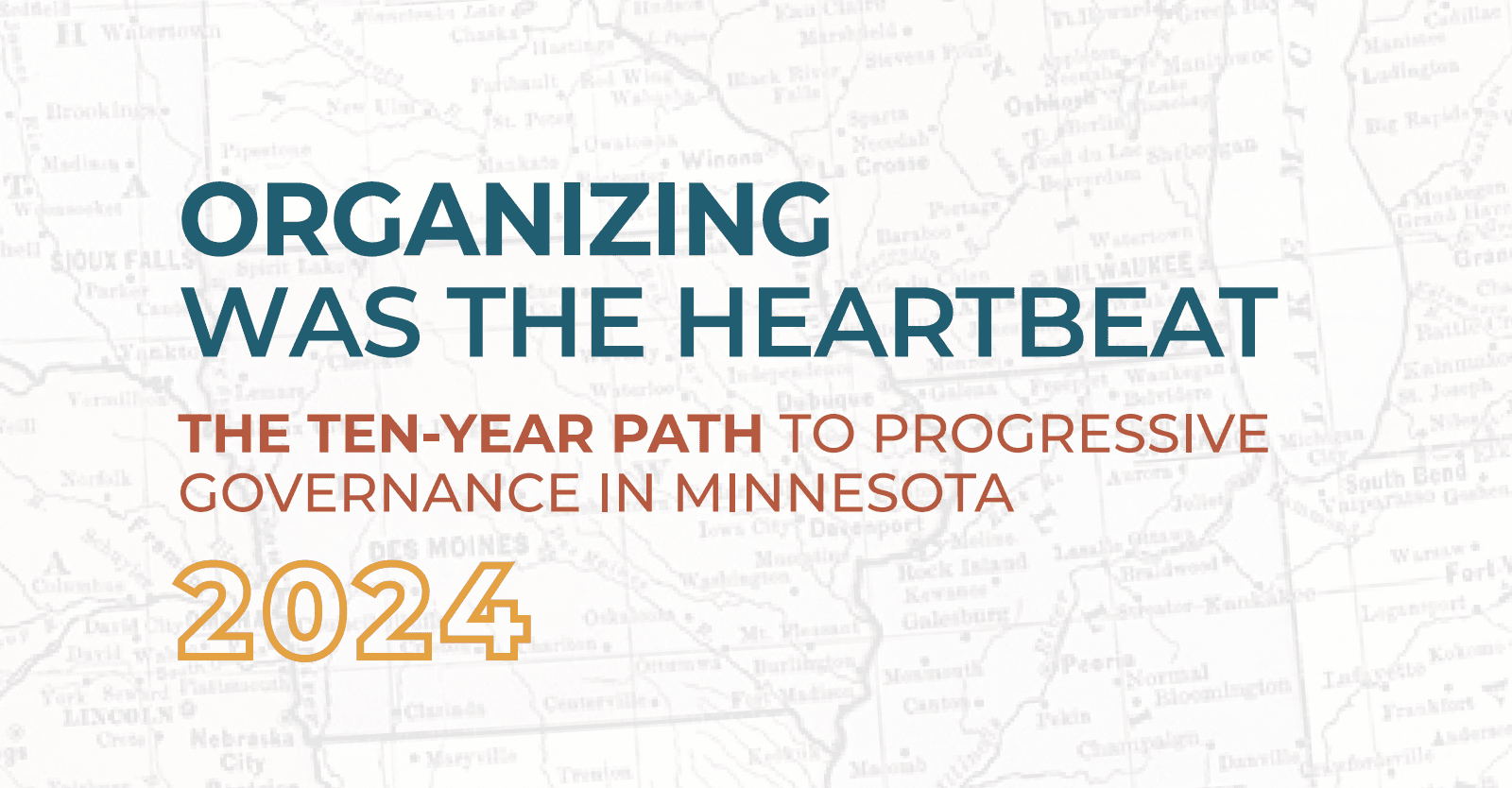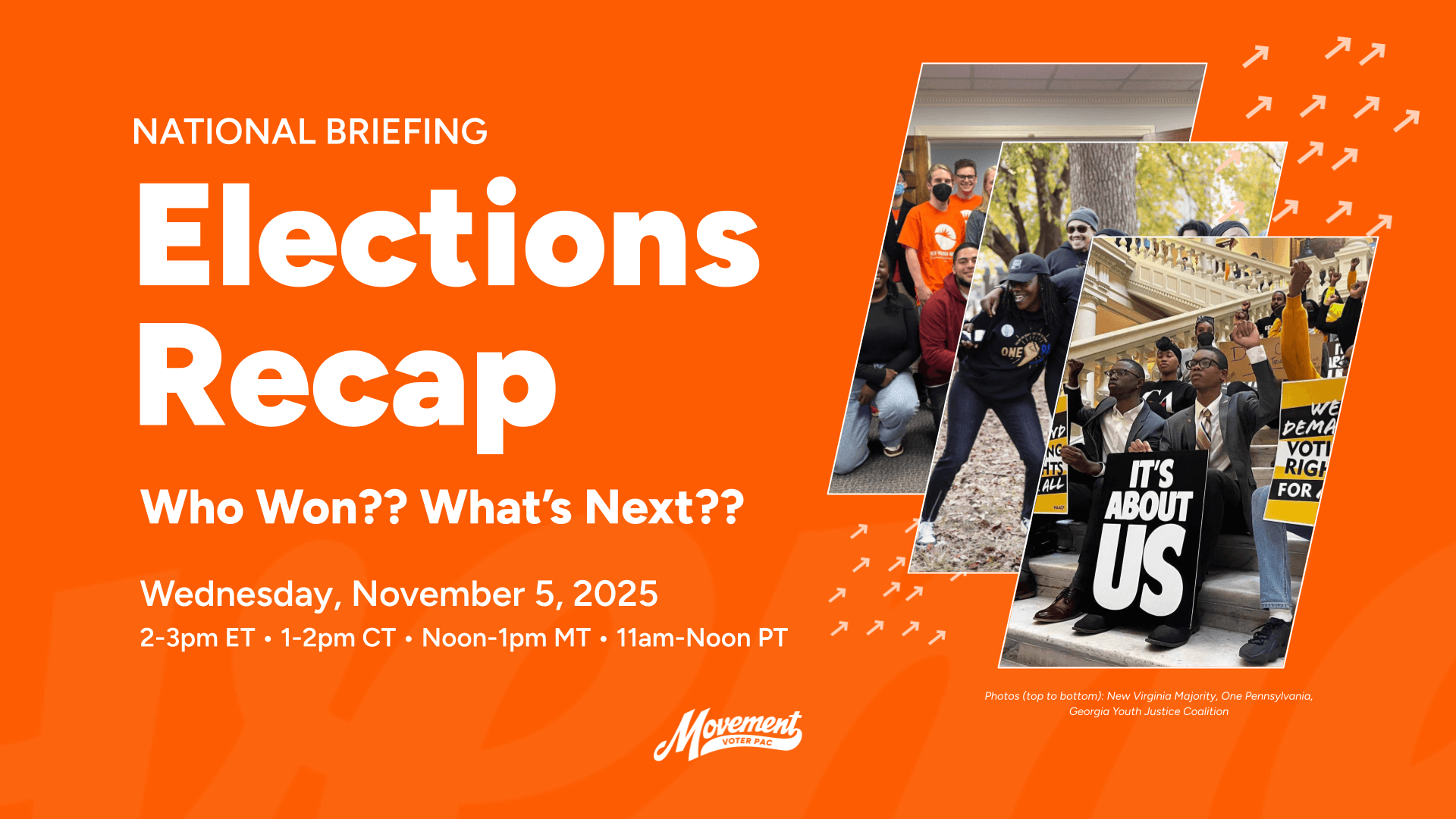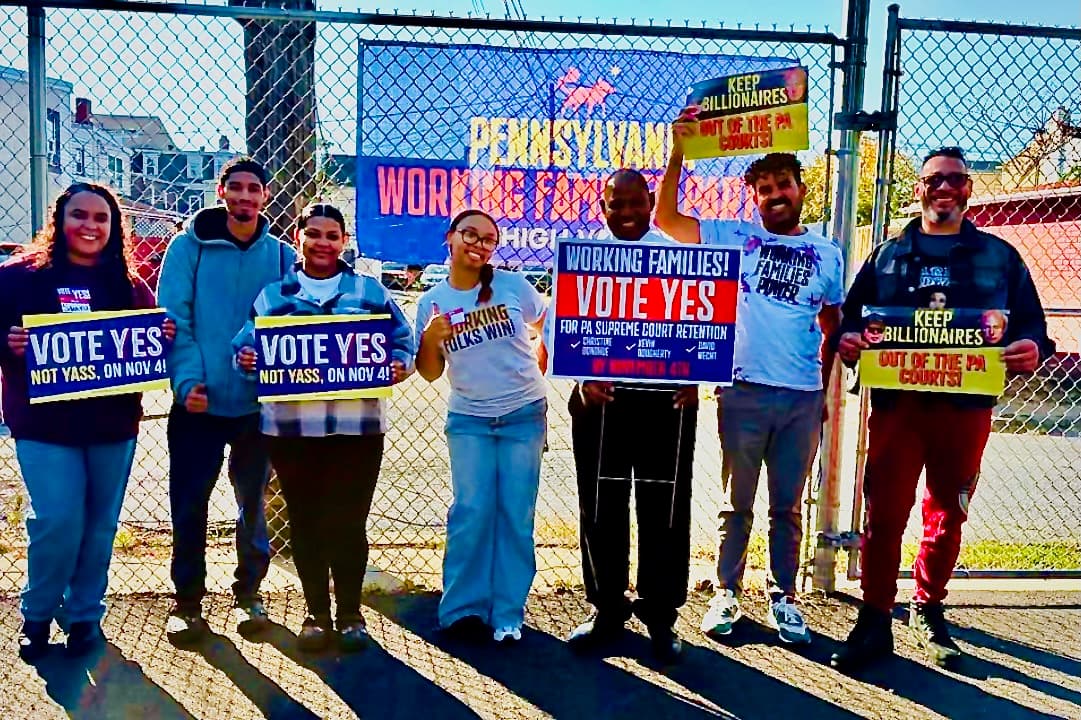MVP friends,
As we close out 2024, I want to share a bit of an expansive take on how we’re thinking about the next four years, especially the urgent work ahead for 2025.
OK here we go:
Why are we still doing this work?!
Looking back at 2024 and ahead to our plans for 2025, I’m reminded of an MVP supporter who recently pointed out something extremely heartening: Even after the heartbreaking losses of the 2024 elections, everyone at MVP is still here and just as committed to this work as ever.
Why is that? Why are we still doing this work?!
To me the answer is as clear today as it was the day before the election: When we invest at the intersection of organizing, movements, and electoral power, we go WAY further, faster, to the world we want to see.
- If all we do is turn out voters, we’ll never build the long-term power we need.
- If all we do is organize locally, we’ll never bring about change at the scale we need.
- But if we connect both those things with real, bottom-up, sustained movement building, THAT’S when we have a shot – even when the odds don’t appear in our favor and the future looks dark.
Think about this… In many ways, the moment we’re in feels like a complete dumpster fire, right? But if we want to make any sense of this time — and put our 2025 plans (see below) in context — we have to zoom out to see the bigger picture…
What is the bigger picture?
The truth is, we are a part of a MUCH larger story. It’s a story that goes back decades, even centuries, and will continue long after we are here. You could call this story “The Long March to Freedom.” Michelle Alexander called it “the Revolutionary River”.
Michelle says it best in her piece “We Are Not the Resistance”… I’m just going to quote this passage, which says it all:
“If we pause long enough and consider where we stand in relationship to the centuries-long quest to create a truly equitable democracy, we may be able to see that the revolutionary river that brought us this far just might be the only thing that could possibly carry us to a place where we all belong.
Every leap forward for American democracy — from slavery’s abolition to women’s suffrage to minimum-wage laws to the Civil Rights Acts to gay marriage — has been traceable to the revolutionary river, not the resistance. In fact, the whole of American history can be described as a struggle between those who truly embraced the revolutionary idea of freedom, equality, and justice for all and those who resisted.”
We are not “the Resistance”. We are inheritors and stewards of the movements that brought us this far and have so much further to take us still.
I’m sharing all this because the movements behind us are instructive to the challenges ahead of us.
If you look at some of the biggest advances of the 20th century — women’s suffrage, the New Deal, the 40-hour workweek, the Civil Rights Act, the Clean Air Act, marriage equality, and more — they all have a few things in common.
Sweeping progress has always been the result of long-term investment in organizing, movements, and civic engagement. Our social movement forbearers:
- Built community-based organizations.
- Nurtured broad coalitions and durable alliances.
- Focused on long-term power vs. quick fixes.
- Mobilized voters to have their voices heard.
- Told bold, hopeful stories of what’s possible.
- Shifted the narrative, changing hearts and minds on a massive scale.
- Strategically leveraged crises and seized narrow windows of opportunities.
What does this have to do with 2025?
There is a lot we are still determining about our 2025 strategy — but we DO know we’ll be investing in the best and most promising organizations that are leading the kind of work described above.
As we prepare to hit the ground running in January, we are laser-focused on four big jobs:

Because here’s what we know:
1. We have to block the Trump agenda and protect our most vulnerable communities.
The next administration has already promised their agenda for the first 100 days: tax cuts for the 1%, mass deportations, social safety net cuts, and rollbacks to climate funding. The arsonists are about to be running the fire department.
But we can make Trump a four-year lame duck — by pressuring Congress, protecting rights at the state level, and defending BIPOC, LGBTQ, immigrant, and other communities, through lawsuits, direct action, media campaigns, and more.
[caption id="attachment_21871" align="alignnone" width="1920"]Preliminary 2026 House Targets, as of 12/10/2024[/caption]

Preliminary 2026 House Targets, as of 12/10/2024
The good news? MVP’s Senior State Strategy Director, Sarah Chaisson-Warner, who was heavily involved in the 2017 fight to save the Affordable Care Act, is leading our “Block the Trump Agenda” strategy.
2. We have to build real, sustained, state-level power – because it’s not enough for us to just block the bad stuff.
Even as we look at stalled progress at the federal level for the next four years, we have an enormous opportunity to build power and advance change in the states.
Look at Minnesota, home to some of the most sweeping progressive policy wins of the last decade: Abortion rights, free school meals, paid sick leave, 100% carbon-free energy by 2040, and more.
Here’s the thing: The “Minnesota Miracle” didn’t just come out of nowhere – it was the result of over a decade of strategic base-building and organizing, much of which was led by MVP’s local partners. (Learn more about all this here, here, and here.)
[caption id="attachment_21867" align="alignnone" width="1600"]Win the Midwest's landmark 2024 case study, "Organizing Was the Heartbeat: The Ten-Year Path to Progressive Governance in Minnesota"[/caption]

Win the Midwest's landmark 2024 case study, "Organizing Was the Heartbeat: The Ten-Year Path to Progressive Governance in Minnesota"
What would it be like if we got serious about state-level power building, and invested in deep, long-term organizing and big-tent alliance building in other states where the opportunities are ripe and waiting?
We know how to do this – we just need the sustained investment to make it happen. The good news? MVP’s second Senior State Strategy Director, Javier Morillo, is one of the architects of the Minnesota Model and is leading our “Build State-Level Power” strategy.
3. We need to upgrade and adapt our movement-building for the fractured, heavily online media environment of the mid-2020s.
The dust is still settling on the 2024 elections, but already, one of the toughest pills to swallow is that youth, voters of color, and working-class voters either tuned out or voted for some deeply regressive social and economic candidates.
It will take time to fully unpack this, but one thing we know is that regressive movements have invested for years and years in winning these voters over through deep, relational organizing. On top of that, they have mastered the art of seizing opportunities created by a fractured media environment, shaping worldviews, and propagating narratives that scapegoat vulnerable groups and pit us against each other.
We can decry this, or we can learn from it. At MVP, our internal motto for 2025 is “there’s no room for business as usual.” You can count on us to fund some of the best and most promising innovations in these areas in 2025 and beyond.
4. We need to win policy change at the state level – and start laying the groundwork now to win back governing power at every level.
Our local partners are already gearing up for the 2025 legislative sessions and scheming around state-level ballot measures we can pass to improve material conditions for millions of people — even in deeply conservative states.
On top of the policy campaigns ahead, here is a simplified walkthrough of key federal and state electoral opportunities from 2025 through 2028:
- 2025: Win state power defending state Supreme Court majorities in Wisconsin (Apr 1) and Pennsylvania (Nov 4), and flipping the governorship to regain a trifecta in Virginia (Nov 4).
- 2026: Win the Midterms, flipping the House (targeting districts in roughly eighteen states), gaining in the Senate (six contested races), and gaining state power in red, purple, and blue states alike.
- 2028: Win a federal Democratic trifecta by flipping the Presidency (eight contested swing states), flipping the Senate (seven contested races), and winning the House.

If you ask our local partners and national allies, they will tell you all this work begins now. They are already mapping out their 2025 strategies, and in many cases, unfortunately, making extremely difficult budgeting decisions, as a consequence of the boom-and-bust funding cycle many electorally-focused donors have inadvertently brought about, which has kept our movements from realizing their full potential.
So what now?!
Our partners know what they need to do — they just need the funding to start strong.
That’s where the MVP comes in. We view it as our role — our privilege, our joy, our duty, our responsibility — to be the supply line for the most effective year-round organizing work around the country.
Looking back, we’re standing on the shoulders of giants. Looking ahead, we are facing some of the biggest existential challenges that have ever faced human civilization. And looking right here, right now, we think we have an incredible opportunity to put our money where it can make the most impact: Right at the intersection of organizing, movements, and civic engagement.
If that resonates with you, stay the course with us in resourcing this work. (For easy reference, here are options).
How do we get from where we are to a new, 21st-century progressive era in which everyone can flourish? I don’t have all the answers and neither does anyone on the MVP team. In fact, anyone who says they do right now needs to be taken very skeptically.
But what we do know is that there are no shortcuts to building the long-term, bottom-up power we need to transform our country, and hundreds of our local organizing partners are going to be on the frontlines of making the change we need — next month, next year, and well beyond.
If we can commit to funding this work for the long haul, we will look back at this tumultuous period and see that it was a prologue, or a prelude, to the progressive era we’d been dreaming of all our lives.
Thanks for being our partners in this work. See you in 2025.
Gratefully,
Zo Tobi, MVP Director of Communications
(On behalf of the MVP team)




